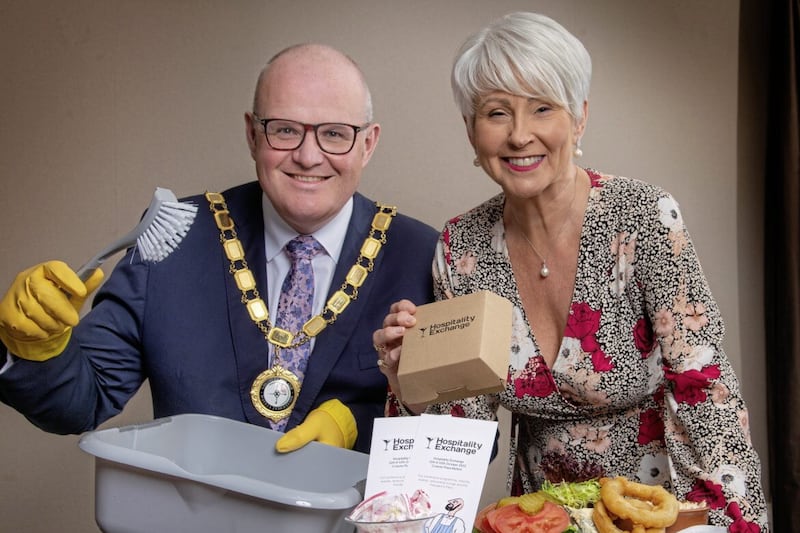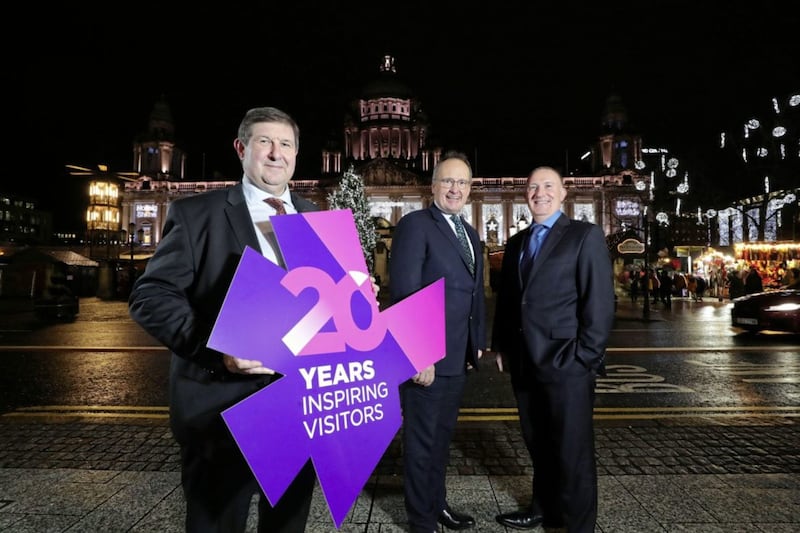THE Northern Ireland Hotels Federation (NIHF) is 20 years young this year. Established in the last millennium (just), it has been the voice for the hotels sector during a period of unprecedented change in the tourism landscape.
Were it a child, its 20th birthday would mark its transition from a teenager into adulthood. So, to recognise the important milestone that is its 20th anniversary, it seems fitting to review the world in which it has grown up.
Northern Ireland's tourism industry was a very different place in 1999. The signing of the Good Friday Agreement changed perceptions of the country as a destination but in truth, we were ill-prepared to become a convincing tourism destination.
In that year, there was around 10.6 million overnight stays of which around 15 per cent were taken in hotels. The annual hotel bedroom occupancy rate across Northern Ireland was 58 per cent and the EBITDA ratio was 10.9 per cent at £4,230 per room. Of 15,100 tourist accommodation bedrooms on January 1 1999, some 4,899 were in hotels.
During that year, the Giant's Causeway welcomed around 395,000 visitors, the Ulster Museum 215,000 and Belleek Pottery around 190,000. Two cruise ships visited Belfast.
To its great credit, the Northern Ireland Tourist Board (since rebranded as Tourism NI) realised that private sector investment would only occur if the public sector acted as a catalyst and its Strategic Framework for Action of 2004 sought to develop our greatest natural assets as 5 "Signature Projects" to deliver international stand-out.
The public sector then invested around £300m in the Walled City of Derry, the Giant's Causeway, the Causeway Coast Touring route, Saint Patrick and Titanic Belfast/Maritime Heritage and this has been supported and augmented by intensive marketing and investment in world class events since 2011.
And that strategy has worked. In 2018, Northern Ireland hosted 16.3 million overnight stays of which 72 per cent were out-of-state visitors. Of that total, 23.5 per cent stayed in hotels, meaning that the industry welcomed more than 3.8 million overnight guests. The Giant's Causeway welcomed 1.04 million visitors, the Ulster Museum 585,000, Titanic Belfast 815,000, Belleek Pottery 209,000 and Belfast welcomed 145 cruise ships.
If anyone has any doubts about the importance of the hotel sector to Northern Ireland tourism, then consider the following . . .
The very substantial increase in visitor numbers and overnight stays has driven around £500 million of private sector investment in hotel stock. Since 1999, it has added 4,322 additional bedrooms.
In total, hotels now account for almost 40 per cent of all tourist accommodation stock (9,221 out of 23,250 bedrooms), meaning that in the past 20 years, 53 per cent of all new bedroom supply of all types has been developed by hotels.
In 2008, total revenue per available room (TrevPAR) in the hotels sector was £37,794 and EBIDTA per available room was £3,630 (a ratio of 9.6 per cent).
Fast forward to 2018, and TrevPAR was £69,158 and EBIDTA was £13,567 (19.6 per cent). The average bedroom occupancy rate across Northern Ireland was 75.6 per cent - a long way from the 57 per cent two decades earlier.
Today, the sector directly employs around 12,000 people, has an annual wage bill of £210m and spends a further £250m a year on supplies and services.
If it wasn't for the sterling work of the NIHF, then most of this would go unnoticed.
So, raise a glass to all of those involved in making tourism what it is today, and especially to the NIHF and its transition to adulthood. Cheers! And here's to the next 20!
:: Hospitality Exchange (www.hospitalityexchange.org.uk), organised by Northern Ireland Hotels Federation, takes place on October 15 & 16 at the Crowne Plaza Belfast. It is aimed at those who own, manage or work in a hotel, B&B, pub, restaurant, museum, airline or coffee shop.
:: Michael Williamson is director of ASM Chartered Accountants in Belfast








